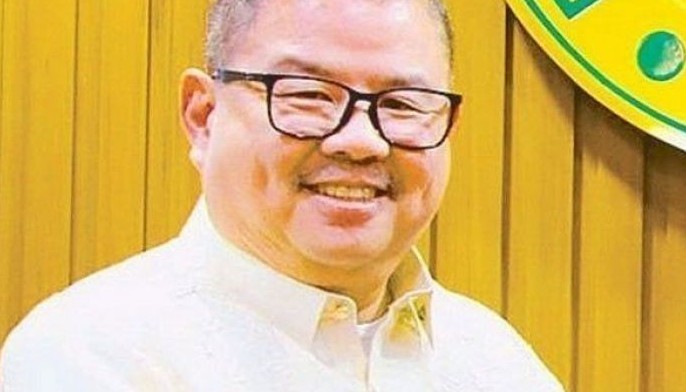It has been seven months since Agriculture Secretary Francis Tiu Laurel was appointed with much expectations. Hopes were high that Tiu, a successful entrepreneur, will be able to inculcate a results-oriented business approach to fix the problems of our agriculture sector. Seven months is not a long time but should be enough for us to get a hint of where he is going and how he is approaching the problems, urgent and long term, that are now on his plate.
So far, his monumental accomplishment is the appointment of a platoon of undersecretaries, assistant secretaries and other high officials, 26 total. Sure, he needs help specially in sectors he is not that familiar with. But few expected a business entrepreneur to bloat the bureaucracy as his first act. What many were hoping for was a broad statement of what ails agriculture and how he plans to get the work done. Much of the problems are structural and are difficult to reform quickly but a recognition of these roadblocks is a first step toward the change that folks are waiting for.
Productivity is the agri sector’s most urgent and basic problem. And farm consolidation that would enable modernization to take place appears like something Sec. Tiu Laurel should recognize right away if only to signal to BBM that anything less than consolidating farms is like rearranging deck chairs on the Titanic. So far, this point has not been recognized enough, if at all.
Maybe Sec. Tiu Laurel has been sidetracked by the controversies on how to handle rice. The price of rice is sky high. According to the Philippine Statistics Authority, a kilogram of regular milled rice at the national level had an average retail price of P 51.14 during the second phase of June 2024 (15 to 17 June 2024). The price may be lower in some regions but most likely still in the P40 and above level even after the harvest season.
The NFA is mandated to buy palay from farmers. The NFA procurement price ranges from P23 to P30 per kg for clean and dry palay while the buying price for fresh and wet palay increased from P17 per kg to P23 per kg. The NFA said it has a budget of P17 billion for buying locally produced palay this year. Palay, dry or wet, undergoes milling.
Google estimates that a good rice mill will produce 50-60 percent whole kernels with 5-10 percent large broken and 10-15 percent small broken. So, selling rice at P29 a kilo at Kadiwa Centers is a losing proposition for the taxpayers.The DA also wants to make well-milled rice available to the public through Kadiwa centers at prices lower than prevailing market rates.
OK. We understand this is a political program, worse than a band-aid solution, but necessary to keep the masa thinking the BBM administration is taking care of them. But the NFA stock is limited and Kadiwa Centers are not extensive enough to make most of the masa happy. Making pa-pogi is perhaps necessary but hopefully it did not distract Sec. Tiu Laurel from his real mission.
Theoretically, the reduction in the tariff for imported rice should result in lower retail prices. But the traders have control over rice stocks. They can decide that they will limit the reduction in retail prices to recover losses from importations made before the tariff reduction. The government does not have enough rice stocks to flood the market, and force prices to go down.
The closest I could get to a mission statement worthy of Sec. Tiu Laurel’s credentials is what he said about technology revolutionizing Philippine agriculture, paving the way for increased productivity and profitability while attracting a younger generation of Filipinos to consider being farmers. But how can he modernize unless he consolidates farms first?
“The big challenge we face is making farming profitable,” the DA chief said. “The solution lies in embracing technology-based farming methods.”
Sec. Tiu Laurel dreamed a bit as he expressed interest in scaling up agricultural practices through large-scale greenhouse facilities, inspired by South Korea’s extensive use of such technology across 52,000 hectares. In contrast, only 500 hectares in the Philippines are currently dedicated to greenhouse farming.
The four-year plan crafted by the team of Sec. Tiu Laurel envisions increasing agri-fishery production by increased mechanization, improvement of post-harvest systems and infrastructures, development of efficient logistics systems for input and production output, expansion of market access, digitalization and strengthening partnership with farmers, fisherfolk and the private sector.
We have heard similar plans before. How will Sec. Tiu Laurel make all that happen?
It is interesting that former agriculture secretary Emmanuel Piñol is planning to lead a team of Filipinos to help the Papua New Guinea (PNG) government in its rice self-sufficiency program.
“As soon as the PNG achieves a level of rice sufficiency, excess production would be brought home to the Philippines.” Piñol said.
Former agri usec Fermin Adriano is not impressed with the PNG idea. “Wouldn’t it be better to just allow big conglomerates here to assemble 2,000 hectares of land for palay production? This will require lifting agrarian reform law’s land retention ceiling and over regulation of leasehold arrangements. Why do we have to go to PNG because we cannot change our land policy framework? That is a cop out.”
Apparently, Vietnam also offered thousands of hectares of land for rice cultivation by our private sector for export to the Philippines. The offer was made when former usec Leo Sebastian was responsible for the Rice Industry Development Program. As he spent almost a decade as an international rice expert in Vietnam, authorities there offered him this arrangement.
Do we really have to go abroad to achieve food security? Maybe because we have bad leadership we have to go abroad to get anything done?
Boo Chanco’s email address is bchanco@gmail.com. Follow him on X @boochanco.


